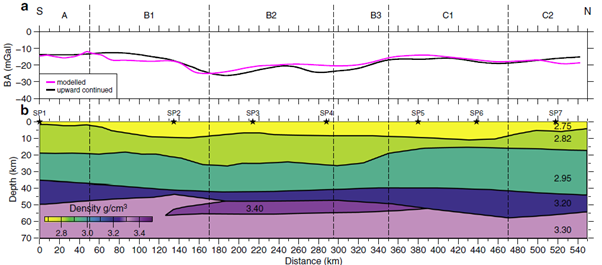Long-lived Paleoproterozoic eclogitic lower crust
The transition between low-density crust and high-density mantle is a fundamental boundary in the Earth. It is usually assumed to coincide with a change from silica-rich (felsic to mafic) crust to silica-poor (ultra-mafic) mantle. However, it has long been speculated that also intermediate rock types may exist where mafic crustal material has been transformed at high-pressure into high-density, eclogitic facies rocks. Usually it is assumed that such rock types will fall into the mantle (delaminate from the crust) due to its very high density, and that the occurrence of eclogites at the crust-mantle boundary is sparse. This article presents the first evidence for the presence of an extensive layer consisting of long-lasting eclogite facies rocks at the crust-mantle boundary. This unexpected observation has been made by analysis of seismic data from central Scandinavia. It indicates that substantial amounts of eclogite facies rocks may still be present in the lithosphere, and it challenges conventional models for the role of lower crustal eclogitization and delamination in lithosphere evolution and for the long-term stability of cratonic crust.

Buntin, S., Artemieva, I. M., Malehmir, A., Thybo, H., Malinowski, M., Högdahl, K., Buske, S., 2021. Long-lived Paleoproterozoic eclogitic lower crust. Nature communications, 12(1), 1-13. https://doi.org/10.1038/s41467-021-26878-5